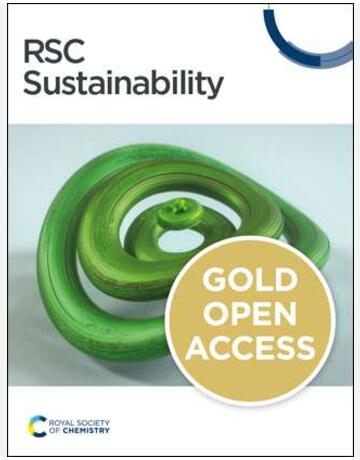革新纺织品染色技术,实现可持续纺织品制造:以深度学习为基础,提高能源效率和减少环境影响,开创可持续未来的绿色实践
IF 3.3
3区 环境科学与生态学
Q2 ENVIRONMENTAL SCIENCES
引用次数: 0
摘要
纺织业是全球经济的重要组成部分,因其对环境的影响而举足轻重。特别是染色过程中水和化学品的使用,引起了人们对气候变化和环境可持续性的关注。因此,无论从环境还是经济角度来看,纺织厂都必须采用绿色工业标准,特别是在染色操作中。采用绿色工业标准的目的是减少纺织品染色过程中的水和能源消耗,最大限度地减少废物,并降低碳足迹。在《巴黎气候协定》签署后,这种方法已成为实现纺织业可持续发展的关键。这种转变的重要因素包括染色过程中使用的洗涤水的再利用、废水的循环利用,以及通过必要的方法和设备改变来提高能源效率。本研究分析了位于阿达纳有组织工业区的一家拥有四家分厂的纺织厂自 2011 年以来的能源、劳动力、生产和消费数据。在这些工厂中,UT1 是平均能耗和水耗最高的工厂。近年来,人工智能和机器学习技术在工业流程预测中的应用越来越多。使用 LSTM(长短期记忆)和 ANN(人工神经网络)预测方法对数据进行分析。特别是 LSTM 算法,它提供了最准确的结果,能够对未来几年染色过程中的耗电量进行高级预测。根据记录,2020 年的耗电量为 3,717,224 千瓦时,总能源成本为 1,916,032 土耳其里亚尔。电力消耗占能源消耗总量的 22.34%,而这一能源类型在成本中所占比例为 43.25%。根据这些数据,使用 LSTM 模型预测能源消耗的 MAPE 值为 0.45%,这表明该模型能够进行高精度预测。因此,安装了一个太阳能发电站来优化能源消耗,2023 年实现了夏季节能 60%,冬季节能 25%。耗电量预测结果对规划提高工厂效率的战略举措起到了重要的指导作用。在以降低能耗和碳足迹为目标的改进工作之后,工厂内的特定瓶颈点的流程和布局也得到了显著优化。这些改进节省了劳动力、时间和空间,降低了单位生产成本。本文章由计算机程序翻译,如有差异,请以英文原文为准。
Sustainable Textile Manufacturing with Revolutionizing Textile Dyeing: Deep Learning-Based, for Energy Efficiency and Environmental-Impact Reduction, Pioneering Green Practices for a Sustainable Future
The textile industry, a substantial component of the global economy, holds significant importance due to its environmental impacts. Particularly, the use of water and chemicals during dyeing processes raises concerns in the context of climate change and environmental sustainability. Hence, it is crucial from both environmental and economic standpoints for textile factories to adopt green industry standards, particularly in their dyeing operations. Adapting to the green industry aims to reduce water and energy consumption in textile dyeing processes, minimize waste, and decrease the carbon footprint. This approach has become crucial in achieving sustainability in textiles following the signing of the Paris Climate Agreement. Important elements of this transformation include the reuse of washing waters used in the dyeing process, the recycling of wastewater, and the enhancement of energy efficiency through necessary methodological and equipment changes. This study analyzes the energy, labor, production, and consumption data since 2011 for a textile factories with four branches located in the Adana Organized Industrial Zone. Among these factories, the one designated as UT1, which has the highest average energy and water consumption compared to the other three branches, is selected. In recent years, the use of artificial intelligence and machine learning technologies in predicting industrial processes has been increasingly observed. The data are analyzed using LSTM (Long Short-Term Memory) and ANN (Artificial Neural Networks) forecasting methods. Particularly, the LSTM algorithms, which provided the most accurate results, have enabled advanced forecasting of electricity consumption in dyeing processes for future years. In 2020, electricity consumption was recorded as 3,717,224 kWh and this consumption was reflected in the total energy cost as TRY 1,916,032. Electricity consumption accounts for 22.34% of total energy consumption, while the share of this energy type in the cost is 43.25%. In the light of these data, the MAPE value for energy consumption forecasts using the LSTM model was 0.45%, which shows that the model is able to forecast with high accuracy. As a result, a solar power plant was installed to optimize energy consumption, and in 2023 60% energy savings were achieved in summer and 25% in winter. The electricity consumption forecasting results have been an essential guide in planning strategic initiatives to enhance factory efficiency. Following improvement efforts aimed at reducing energy consumption and lowering the carbon footprint, significant optimizations in processes and layouts have been made at specific bottleneck points within the facility. These improvements have led to savings in labor, time, and space, and have reduced unit production costs.
求助全文
通过发布文献求助,成功后即可免费获取论文全文。
去求助
来源期刊

Sustainability
ENVIRONMENTAL SCIENCES-ENVIRONMENTAL SCIENCES
CiteScore
6.80
自引率
20.50%
发文量
14120
审稿时长
17.72 days
期刊介绍:
Sustainability (ISSN 2071-1050) is an international and cross-disciplinary scholarly, open access journal of environmental, cultural, economic and social sustainability of human beings, which provides an advanced forum for studies related to sustainability and sustainable development. It publishes reviews, regular research papers, communications and short notes, and there is no restriction on the length of the papers. Our aim is to encourage scientists to publish their experimental and theoretical research relating to natural sciences, social sciences and humanities in as much detail as possible in order to promote scientific predictions and impact assessments of global change and development. Full experimental and methodical details must be provided so that the results can be reproduced.
 求助内容:
求助内容: 应助结果提醒方式:
应助结果提醒方式:


